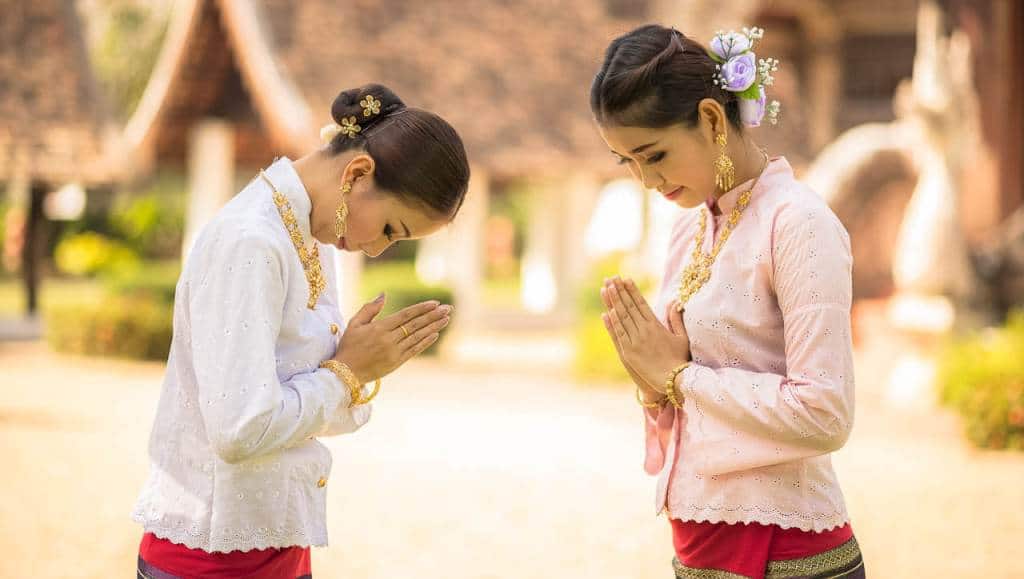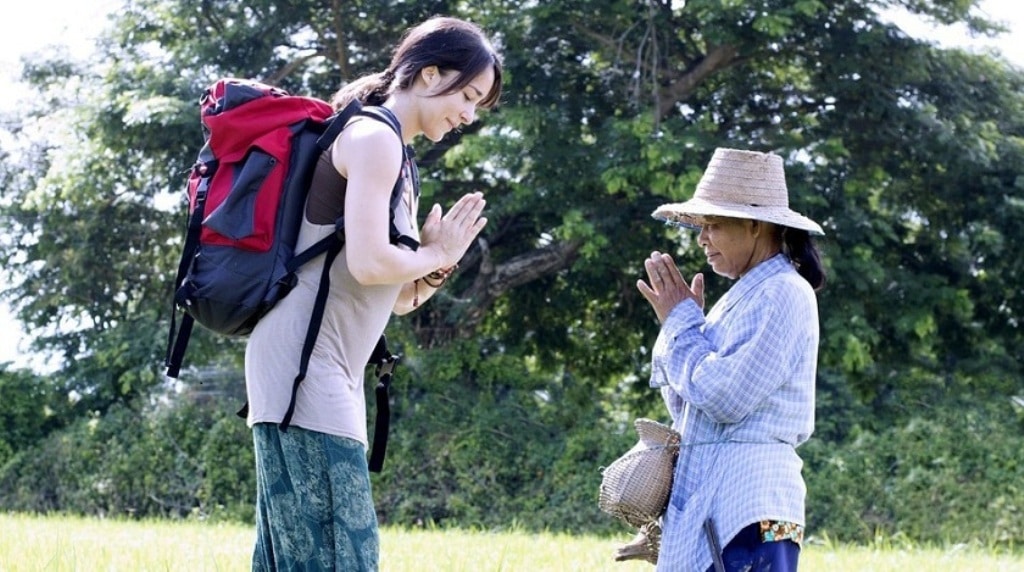Thailand is a vibrant country located in the middle of the Indochinese Peninsula. Formerly known as Siam, Thailand has a population of 66 million people. The beautiful country is 95% percent Buddhist. Their fascinating and peaceful culture revolves around long-standing traditions of respect towards nature. Buddhism also teaches love and understanding between humans.
The “Wai” greeting originates as a translation of Buddhist thought. It’s a form of short meditation in saying “hello.” You’re paying respects to the person in front of you.
Knowing how and when to salute appropriately can bring you closer to Thai philosophy. For tourists, this traditional way of saluting helps them understand and bond with Thai society. It’s also an excellent way of making friends and show your appreciation of their traditions.
What is the “Wai” Thai greeting
The “Wai” Thai greeting is a customary Asian practice that’s typical of Buddhist regions. It’s pronounced similarly to the word “why.” Although visitors aren’t going to greet everyone they see, it’s essential to return the greeting once received from a local. More so, the word “Sawasdee,” which means “hello,” often accompanies the gesture.
How to “Wai” Thai greet
Practically, you put your hands together in front of your face as if you were praying. The palms should be pressed together and in front of your face. You then make a small, symbolic head bow to the other person. The movement is relatively quick and in one motion. However, the spiritual implications are significant. There’s a small difference between men and women. Females bend their knees while men only bow their heads.
The three types of “Wai”
There are only three ways to “Wai” salute. Generally, the hand positioning indicates the level of respect you give. The higher you put your palms together, the more respect you show. Lower hand placement is more of a casual salute.
1. Peer-to-peer “Wai”
This informal greeting is useful when meeting locals and regular people. Palms are pushed together in front of your neck. Also, your fingertips should touch your chin. Finally, the head bow movement is swift.
2. Respectful “Wai”
In this variant, the palms are higher until the thumbs touch the nose. It’s a more courteous way of saluting older people or individuals with a more important social status. The head movement is also quick and symbolic. The only difference is that the praying hand positioning is more elevated.
3. Buddhist monk “Wai”
The ultimate sign of reverence is when the palms are the highest on one’s face. The thumbs should touch the eyebrows, while the bowing motion is deeper and slower. This last “Wai” variant is suitable for Buddhist monks and royalty.
When to “Wai”
Royalty
The “Wai” salute isn’t used just to say hello to other people. It’s a respectful gesture that’s good for apologizing, thanking, or saying goodbye. Many Thai people will use “Wai” to bless houses and shrines. Another common practice is to “Wai” whenever relating to the monarchy. For instance, you should greet a picture of the king in the most respectful manner.
Monks
Locals often “Wai” salute Buddhist monks. However, monks aren’t expected to return the favor. Don’t get offended if that’s the case.
When not to “Wai”
You shouldn’t “Wai” greet children, teens, or anyone younger than you. That’s because Thai culture puts a lot of stock in social status. Their criteria weigh two factors: age and activity. Thus, the younger the individual, the lower the social level.
The same goes for jobs. It would be best not to formally greet a restaurant worker, a SPA employee, cab drivers, or similar positions. Instead, smile and nod your head just a bit. Sure, it may seem strange not to return a cordial salute from an employee as a foreigner. However, inappropriate greetings can create confusion and attract unwanted attention.
Even if you don’t get it right the first time, don’t worry. Thais are tolerant of inexperienced visitors. Plus, there’s no stigma for overly-respectful tourists. Thailand always appreciates signs of respect.
Why “Wai?”
The Thailandese “Wai” salute is similar to the Western handwave. It’s a form of greeting someone from a distance. However, the spiritual dimension of the “Wai” salute is something unique. It combines elements of the Buddhist tradition in showing respect and appreciation. An assignment writer historian dated the practice to the 12th century. It’s believed that the “Wai” salute was initially a way of saying, “I’m unarmed and come in peace.”
Thailand is a very spiritual country. Their sacred traditions translate into the “Wai” salute: a combination between meditation and respectful greeting. The elderly, Buddhist monks, and royalty are the most important figures of the Thai Kingdom. Don’t forget to place your palms together and bow your head in a sign of appreciation. Sawasdee!
⚠ Article Disclaimer
The above article is sponsored content any opinions expressed in this article are those of the author and not necessarily reflect the views of CTN News







